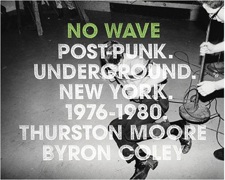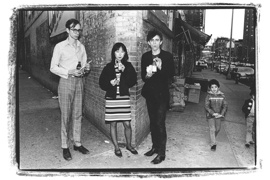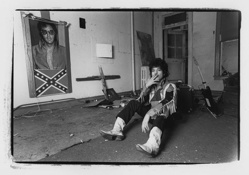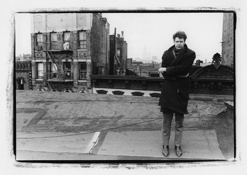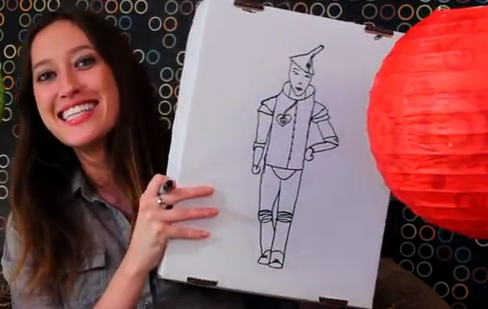All right copyright geeks, it's time to do some more hypothesizing on the Prince/Radiohead/YouTube flap I blogged about in my previous post, Prince, Radiohead, and the Bootlegging Provision of the Copyright Act. Readers posted great comments that merit some elaboration in this post. The idea here is not to provide any sure answers (because I don't have them), but to raise some questions for further discussion. If you are not a copyright lawyer, you'll have to excuse the technical bent; there's just no way to deal with these questions without getting a little esoteric.
To recap, previously I discussed whether the mystery bootlegger who recorded and posted Prince's cover of Radiohead's "Creep" at the Coachella Valley Music & Arts Festival might have violated the anti-bootlegging provision of the Copyright Act, 17 U.S.C. § 1101 and whether sending a DMCA takedown notice was an appropriate legal response. The next day, Eric Goldman of the Technology & Marketing Law Blog, posted the following intriguing comment:
If Prince was simultaneously fixing his Coachella performance (such as
through his own taping of the event), then a third party's independent
recording of the event should be covered under 106, in which case the
notice-and-takedown provisions would be a more appropriate recourse.
This seemed like a plausible argument, but I couldn't get over the question of how someone could infringe a simultaneously fixed recording (hypothetical in this case) without copying or distributing that recording. Recall that Prince doesn't own the rights to the musical composition (Radiohead does). If he has rights in the live performance, they should be limited to any (hypothetical) sound/video recording, right? (To correct one point in my previous post, the bootlegger wouldn't obtain copyrights in his/her direct recording because neither Radiohead nor Prince authorized the recording, so there is no fixation -- see the first sentence of section 106 below.)
Yesterday, the whole issue got more interesting when Fred von Lohmann of EFF made this point:
The "simultaneous fixation" doctrine only applies if the simultaneous
fixation was done in the course of a transmission (see sec 101
definition of "fixed"). So whether Prince and/or Coachella recorded it
is irrelevant, unless it was also transmitted (I'll note that AT&T
sponsored live transmissions of some Coachella performers, but not
Prince).
Fred also brought up a great issue relating to unauthorized derivative works and the anti-bootlegging provision, but I want to try to stay focused in this post.
To understand Fred's comment, we need to look closer at
section 101 of the Copyright Act, which defines fixation as follows:
A work is “fixed” in a tangible medium of expression when its
embodiment in a copy or phonorecord, by or under the authority of the
author, is sufficiently permanent or stable to permit it to be
perceived, reproduced, or otherwise communicated for a period of more
than transitory duration. A work consisting of sounds, images, or both,
that are being transmitted, is “fixed” for purposes of this title if a
fixation of the work is being made simultaneously with its transmission.
The second sentence, so the argument goes, means that simultaneous recording of a live performance only creates a "fixed" work when the work is also transmitted (i.e., broadcasted). At first I was taken aback by this reading of section 101 because I had understood the second sentence as extending protection to live broadcasts (as a special case) without necessarily implying a denial of protection for non-transmitted performances. Putting aside the special case of live broadcasts, the first sentence of section 101 arguably could cover authorized simultaneous recordings without the necessity for transmission.
But a little poking around has mostly disabused me of this view. Two prominent copyright treatises agree with Fred that live performances are not fixed without a broadcast. I didn't find a whole lot of helpful case law. The rationale for limiting fixation to broadcasted performances escapes me. Perhaps Congress drew this distinction because of a special concern for broadcasting, an economically important activity. Maybe it hinged on a congressional judgment that live performances should remain unprotected, except in the special case of live broadcasts and then only limited to the broadcasted material itself (see below).
I get the sense that it might relate to a pre-1976 Act technical understanding that simultaneous authorized recording could not satisfy the fixation requirement as against a simultaneous infringer because there was no copyrighted work at the time the allegedly infringing conduct took place (though perhaps a moment later); Congress had the power to change this understanding, the argument goes, but it only did so for transmitted works. If anyone has any input, on any aspect of this question, please add your comments.
But, to my mind, there's a further question, and one that could impact citizen media coverage of performances and other public events through impromptu recording, and maybe even through things like twittering and live blogging. In proper hypothetical form: Even if Prince or the event promoters (with his authorization) had broadcast the show and made a simultaneous recording, would copyright protection extend to the underlying performance (and thus prohibit the bootlegger's direct copying of the live act) or just to the broadcasted material (i.e., making copies of or re-transmitting the actual broadcast without permission)?
The legislative history, H.R. Rep. No. 94-1476, at 52-53, doesn't look to me like it contemplates extending copyright protection to the underlying performance, and two cases suggest that protection only extends to the broadcasted material. NBA v. Motorola, Inc., 105 F.3d 841 (2d Cir. 1997); Production Continental Broad. Co, 622 F. Supp. 1500 (N.D. Ill. 1985). But, these cases involved underlying "performances" (a parade and sporting events) that weren't copyrightable subject matter regardless of fixation.
On the other hand, the Eleventh Circuit, in a case dealing with a constitutional challenge to the anti-bootlegging provision, seems to state that the performance itself would be protected:
If a live performance is broadcast, e.g., by radio or television, and simultaneously recorded by the performer, any unauthorized recording by a person receiving the broadcast constitutes copyright infringement of the sound recording or motion picture, notwithstanding that the infringer actually copied the live performance directly, and not the fixation thereof.
United States v. Moghadam, 175 F.3d 1269, 1280 (11th Cir. 1999) (emphasis added). This quotation is not a model of clarity and it is probably best characterized as dicta, but it does support the view that direct copying of an underlying performance would be infringement. More persuasively, one could make a statutory argument. If the performance (the "work consisting of sounds, images, or both") is fixed because of section 101, then why shouldn't protection extend to its entirety, not just to a particular manifestation? In other words, by operation of section 101's definition of fixation, the performance becomes an "original work[] of authorship fixed in [a] tangible medium of expression" for purposes of section 102, with all the attendant protections against infringement. There are probably layers that I'm missing here.
So, copyright geeks and fair readers alike, what do you think?

